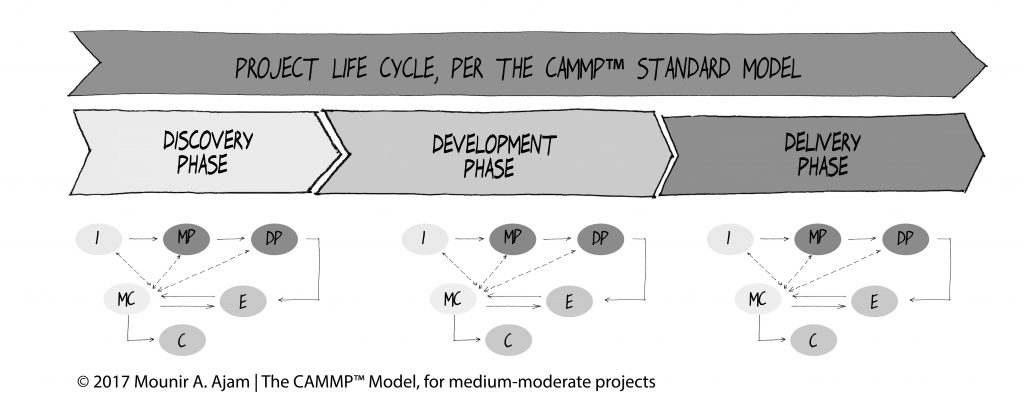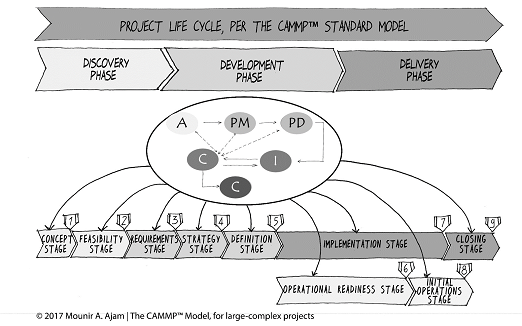Recently, we have been publishing a few articles on the updated PMBOK Guide. One of the topics we touched on a few days ago was tailoring since this is a major feature in the guide’s sixth edition.
In that article, we discussed tailoring in the Guide and in CAMMP. Today we add to that discussion.
Some of the content in this article is from an appendix in our upcoming book on Project Management beyond Waterfall and Agile.
When in the project life should the team select the customized project life cycle
for the specific project under consideration? Along with this question, one might ask, who will do it?
In our views, customization (or tailoring) can happen at two different levels the organizational level and the project level.
Organizational Level
When an organization decides to implement a project management methodology, whether it is CAMMP™ or not, they should establish standardized project life cycle models (methods) that are adapted to their various requirements. If all the organization’s projects are of one type, and they are similar in size, then they need one method to follow. With a diversity of project types and sizes/classifications, they will have more than one method to standardize.
The following are images showing how we have tailored CAMMP. The first is for medium-moderate complexity projects.

The second image is for large-complex projects.

This next image shows how we can integrate agile approaches in the project life cycle of CAMMP.

Project Level
If there are standardized methods, then the project manager (and project management team) could select the one that is most appropriate for the given project. The formal selection takes place during project management planning, although the project manager may have a predetermined idea about the possible model to use during the discovery phase.
Basically, up to now, we are insisting that the tailoring effort is at the organizational level and not the project level.
At the project level, the PM and PMT are only selecting the appropriate life cycle from the menu of methods that exist in the OPMS.
However, if there are no organizational models (methods) to select from, then the project manager and project management team develop and formalize the project life cycle during the discovery phase but finalize it during project management planning (Strategy Stage).
PMBOK Guide, Again
From the earlier article on tailoring, we had highlighted that PMBOK Guide focuses on tailoring done by the project manager for each project. There is a brief mention of the organizational system but no clear, explicit, unambiguous mention that tailoring must start in the organizational system, part of the organizational project management system (OPMS) or what the guide calls “OPA” or Organizational Systems.
It seems that the guide keep the focus on the project manager and this is misleading. However, this is a big and independent topic that we should address in the future with more examples.
In other words, if after selecting a method from the OPMS menu, the project still has unique features not covered in the standardized methods, then there could be additional tailoring and this is what is presented in the guide, or we believe is the intent of the guide although not explicit.
What are your thoughts? Please share
Are you subscribed to our posts? It is easy – do not miss out and subscribe today (near the top right-hand side of the page).

Trackbacks/Pingbacks